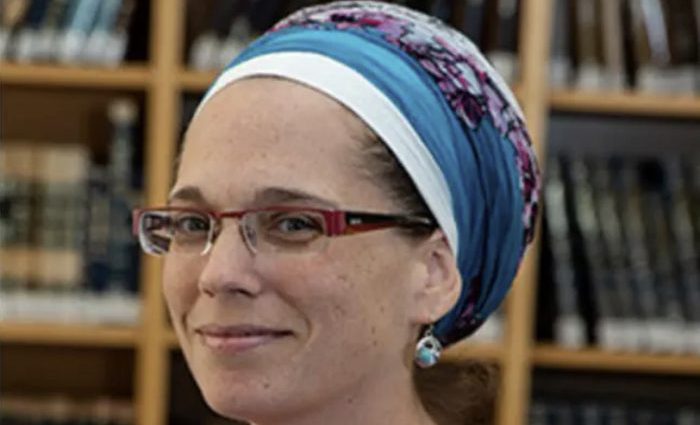The Sara Litton z”l Monthly Emunah Essay .
Blessed is the Merciful One, who gave a three-part Torah, to a three-part nation, through a third, in the third month (Talmud Shabbat 88a). We received a Torah which includes the Chumash, Neviim (Prophets) and Ketuvim (Writings), to a people comprised of Kohanim, Leviim and Yisrael, through Moshe Rabbenu, the third-born child of Yocheved and Amram, in the third month counting from Nissan, the month of Sivan.
This theme of highlighting the number 3 stems from a concept that this number is a “chazakah,” it is strong and resistant to breaking. Verses in Kohelet support this message: While “two are better than one” (4:9) for “if one should fall, the other can raise him” (ibid v.10) but if one attacks, two can stand up to him; a threefold cord is not easily broken (ibid v.12).
As seen in the Talmud, Sivan represents the number 3, a symbol of strength and endurance. On the other hand, the mazal (sign) of the month is that of twins which clearly reflects the number 2. How can we reconcile this seeming contradiction?
Twins
Being a twin does not ensure getting along with one another. The biblical twins Peretz and Zerach have implied tension at their birth (Bereishit 38:28-30) yet not much text is dedicated to their story beyond. The implication is that both latter twins were considered righteous and created a harmonious relationship with one another. Yaakov and Esav, a more well-known set of biblical twins, were diametrically opposed to each other in utero (Rashi on Bereishit 25:22 based on midrash). Much text and midrash are dedicated to their continued antagonistic dynamic. Each set of twins certainly has reason to be jealous, whether getting the Patriarchal blessing of the first born or being the ancestor of David and Mashiach.
When the word teomim, twins, appears in the text describing Yaakov and Esav (Bereishit 25:24), it is written without an aleph (תוֹמִם), whereas the word is written in full with an aleph (תְאוֹמִים) at the birth of the twins Peretz and Zerach (Bereishit 38:27). While Peretz broke forth first, Zerach shines his special light. Each one has a unique place. The letter aleph represents Hashem, the Creator of the world, Aluph shel Olam. It represents the One and only God, as the numerical value of aleph is 1. When God is part of the equation (perceived in the full spelling of teomim by Peretz and Zerach), the contentiousness between the two fades away.
Marriage
So too, in marriage, two distinct individuals join together. If they choose to bring God into the relationship, it will stand strong, as we said the three-fold cord is not easily broken.
Resh Lakish said that at the time that (Adam) was created, it was with two faces. God separated the two and put them back-to-back- with one side being male and the other female (Vayikra Rabba 12:2). It can be said that the original man and woman, in essence, are like a pair of twins, coming into the world together and sharing the same birthday. Each one with his or her temperament, values, and personality.
Husband and wife can merit to have the Divine Presence between them (Sotah 17a-b); when they recognize God as the matchmaker, an integral part of their relationship, they can learn to celebrate each other’s differences and accomplishments.
Sun and Moon
Further exploration of Peretz and Zerach shows that each twin has unique strengths and characteristics. Peretz represents the moon and Zerach represents the sun (see Ramban on Bereishit 38:29 citing Sefer HaBahir). So too, a man on his wedding day is described as the sun: The sun is like a groom emerging from his bridal chamber (Tehillim 19:5-6). The waxing and waning of the moon are often compared to a woman’s monthly cycle. Kabbalistic sources refer to feminine (Malchut/ Shechina) attributes as the moon and masculine (Tiferet) as the sun. This concept is explicitly stated in the Zohar – הַשֶּׁמֶשׁ דָּא זְכָר, וְהַיָּרֵחַ דָּא נְקֵבָה. On some level, Peretz represents the feminine and Zerach the masculine.
The month of Sivan is a month of twins, reflected in the number two. But we have a choice if it should remain as such, teomim without the aleph, or if we will elevate it to invite the aleph, to welcome God, so to speak, into our relationships. Just as the holiday of Shavuot in Sivan is a time of receiving the Torah, where we accept God into our lives as a nation, so too it is a time to reflect on bringing God into the personal sphere and thereby elevating Sivan, the third month, to a month of threes: Blessed is the Merciful One, who gave a three-part Torah, to a three-part nation, through a third, in the third month. And Blessed is the Merciful One, Who invites the sun-like man and the moon-like woman to bring God into their relationships .
See article nih.gov DeMaris, Mahoney, Pargament (2011)
“those who perceived their marriages as sacred reported less marital conflict…greater use of collaborative forms of communication.”
Adina Ellis is a graduate of the Matan Bellows Eshkolot Educators Institute. She has been teaching Tanakh and machshava over the last two decades, initially on college campuses and in Hebrew Schools in the New Jersey area. Since making aliyah in 2005, she has given weekly shiurim in Hebrew and English to women in her community. Adina has taught in the ALIT program and Rosh Chodesh seminars run by the OU Women’s Initiative as well as in the mother-daughter “learn and art” program of OU Israel. She is known for her unique ability to facilitate in-depth textual learning along with engaging and relevant discussions. Adina lives with her husband and children in Yad Binyamin.





